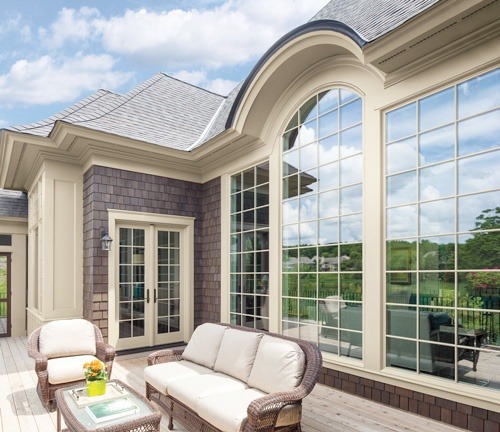


If you are looking for new windows in Cincinnati, one of the key features to look for is energy efficiency. Energy efficient windows will save you money both in the summer and in the winter since they reduce the burden on your air conditioner and furnace. However, the concept of energy efficiency is not as straightforward as you might think. There are a few different features that come together to minimize energy loss through a window.
Specialty Window Glass
Normal, everyday glass is a terrible insulator. If you have ever accidentally left a glass pan on a warm stove, you have observed this. The glass gets warm very quickly; heat passes right through it. Years ago, windows were made with plain glass, so a lot of heat would pass through the windows, increasing heating and cooling bills. Today, however, the most efficient windows feature specialty glass, such as low-e glass. Low-e glass, like SmartSun™ glass from Renewal by Andersen, is coated with a very thin layer of metal. The metal reflects heat away from the glass, rather than allowing it to pass through, and the layer is so thin that your visibility is not affected at all. In the winter, low-e glass reflects heat back into your home. In the summer, it reflects heat back outside, away from your home.
Tightly Sealed Window Sashes
Another determinant of energy efficiency is how tightly the glass is sealed to the window sash. If the glass and sash separate from each other, air can leak in between these two components. In the winter, cold air will seep into your home though these gaps, and in the summer, your air conditioned air will leak out and be wasted. Many windows are tightly sealed when they are new, but some materials lose this tight seal rather quickly.
Vinyl is a good example. Although vinyl windows may be tightly sealed and efficient at first, the vinyl soon separates from the glass, allowing air to leak in. On the contrary, Fibrex® composite remains tightly sealed to the glass for many years, so the windows retain their efficiency and remain leak-free for much longer.
Insulating Window Sash and Frame Material
The material from which your sash and frame are made must also be a good insulator. Aluminum windows, for instance, are not very energy efficient because aluminum conducts heat and will let heat pass right through it. On the contrary, wood windows and wood composite windows are much more insulating. Less heat passes directly through the sash and frame, so your Cincinnati home remains evenly heated or cooled year-round.
Window Style
Some styles of windows are also more efficient than others. Picture windows are the most efficient option because the sashes are completely fixed into the frame; there is nowhere for air to leak through. Casement windows are the next most efficient because the windows latch very tightly into the frame when closed. Double-hung and sliding windows are somewhat less efficient, though you can definitely find efficient ones when you buy from a reputable company.
As you shop for energy efficient window options, make sure you keep the information above in mind. Good windows don’t just come with great glass, but also with good-quality, insulating, tightly-sealing frames and sashes. Contact Renewal by Andersen today to get started with your free, in-home consultation. We’ll recommend the most efficient window style for your Cincinnati home.